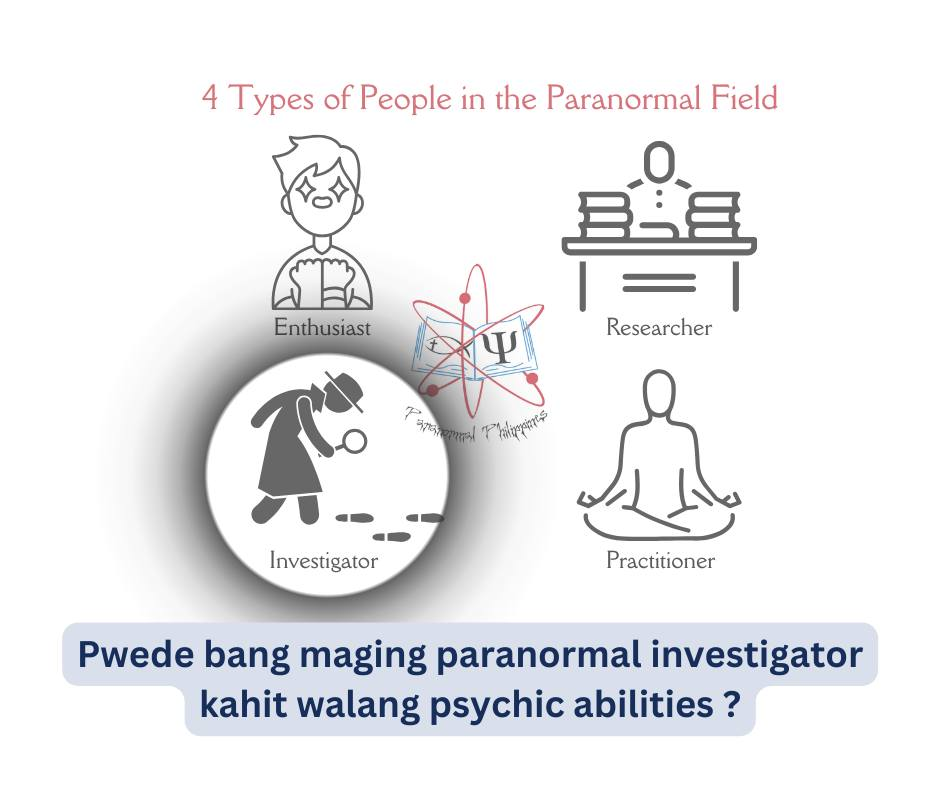📌 What the Paranormal Is and What It Is Not
 🏠 |
🧭 |
🏠 |
🧭 |
What do we really mean when we say something is ‘paranormal’?
Misunderstandings are common, and they affect how people talk about, research, and respond to the unexplained.
Many people misunderstand what “paranormal” truly means.
| Paranormal | Preternatural | Supernatural |
|---|---|---|
| Beyond current scientific explanation, but possibly explainable someday | Rare, uncanny, or seemingly unnatural events that don't break natural law; also, something divine that occurs in nature | Outside the laws of nature; divine, godly, or metaphysical |
| Some examples: ESP, UFOs, apparitions, time slips | Some examples: Prophetic dreams, stigmata, extreme synchronicities, extraordinary events/abilities | Some examples: Angels, curses, deities, miracles, divine intervention, mythological creatures |
| Investigative and experience-based | Older term used in religious/philosophical contexts | Often requires faith or belief in higher realms |
| Greek para (“beside, beyond”) + Latin normalis (“conforming to a rule”) | Latin praeter (“beyond, past”) + natura (“nature”) | Latin super (“above”) + natura (“nature”) |
| First appeared in early 20th century (around 1905), from scientific and psychical research communities. | Originated in Medieval Latin (praeternaturalis) around the 13th–14th century. | Comes from Late Latin (supernaturalis) around the 5th century. |
| Paranormal | Mythology | Folklore |
|---|---|---|
| Reported phenomena, both historically and in modern times, that are currently outside mainstream scientific understanding. | Traditional narratives from ancient cultures that use symbolic language and archetypal themes to explain the world, transmit cultural values, and explore timeless truths about existence (e.g. origin of the world, relationship of humans to the divine). | A body of cultural traditions (including tales, customs, rituals, and beliefs) passed down orally to express identity, values, and local wisdom. |
| Some examples: Ghost sightings, alien abductions, telepathy | Some examples: Creation myths, heroic epics | Some examples: Fairy tales, urban legends, folk remedies, superstitions, songs, customs |
| Paranormal reports may be based on either real, unexplained experiences or on misinterpretations of ordinary events | Mythology may be based on metaphorical narratives, symbolic traditions, or culturally specific interpretations of natural or historical events | Often rooted in collective memory or moral lessons, shaped by everyday concerns and shared experiences |
| Investigated and debated across history and into the present | Preserved and retold through generations, often with religious or philosophical significance | Passed down orally or through practice, changing slightly with each retelling |
The paranormal may resemble myths or folklore because all three involve unusual or extraordinary stories. However, while mythology and folklore encode symbolic meaning and preserve cultural memory, the paranormal is grounded in field reports of unusual experiences.
To clarify, myths or folklore may have originated from actual events, but over time, their details could have changed or taken on symbolic meaning, making it difficult to verify their original form or truth.
3. Paranormal vs. Conspiracy Thinking
| Paranormal | Conspiracy |
|---|---|
| Asks “What is this strange event?” | Asks “Who is behind this and why are they hiding it?” |
| Oriented toward mystery, openness | Oriented toward suspicion, secrecy |
| Phenomenon-centered | Power-centered |
| Can be neutral or spiritual | Often politically charged |
| Paranormal | Anti-Science Attitude |
|---|---|
| Seeks what lies beyond current models | Rejects models entirely |
| May work with fringe science | Often ignores or denies evidence |
| Curious and exploratory | Defensive and dismissive |
| “What if science just isn’t there yet?” | “Science is wrong, period.” |
| Paranormal | Pseudoscience |
|---|---|
| Open to revision and investigation | Makes untestable claims with certainty |
| May use anomalous data or new frameworks | Often borrows scientific terms, but lacks real scientific methods or proof |
| Often treated skeptically by science | Intentionally imitates science to appear credible |
| Example: studying remote viewing | Example: fake miracle cures, or treating symbolic systems as literal science |
| Paranormal Inquiry | Magical Thinking |
|---|---|
| Seeks to observe, document, and interpret patterns, anomalies, or phenomena that appear to fall outside conventional scientific explanations, often with an open yet critical approach | Believes thoughts/actions directly influence reality through mechanisms unrecognized by established scientific understanding |
| “I witnessed a shadow figure” | “If I say this chant, I’ll control events” |
| May involve unknown forces | Assumes power over outcomes |
| Aims to understand phenomena | Aims to manipulate reality through belief or ritual |
| Paranormal | Mental Illness |
|---|---|
| Anomalous experiences with possible shared patterns | Disruptions in perception, cognition, or behavior |
| Can happen to mentally healthy individuals | Diagnosed by persistent, clinically-defined symptoms |
| May have external corroboration (physical evidence, instrument readings, and/or multiple independent witnesses) | Subjective and often internally generated |
| Example: veridical out-of-body experience, shared sightings | Example: hallucinations, delusions, psychosis |
🔹 Investigated through fieldwork, case studies, and sometimes scientific tools
🔹 Open to interdisciplinary inquiry (e.g. psychology, physics, parapsychology, folklore, anthropology, etc.); it is an area of investigation and is not a belief system
🔹 Distinct from fiction or symbolic narrative: it claims to describe real occurrences
🔑 Key Takeaway
The paranormal isn’t a trash bin for every strange or scary thing—it’s a specific realm of inquiry.
It deserves clear language, brave minds, and a willingness to explore the unknown.
By untangling the paranormal from what it is not, we can better explore what truly lies beyond.
- C.E.
More Info:



Comments
Post a Comment